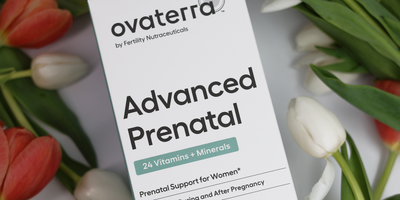November is National Diabetes Month. Today's topic is this very common chronic disease – not only because it’s a public health concern but also because it can be a surprise roadblock to men and women on the TTC journey.
Diabetes is a very common chronic disease that, when poorly managed, can lead to serious systemic health complications. In the US alone, it affects over 34 million people; WHO estimates over 422 million people with diabetes worldwide. What many people don’t realize is that diabetes can interfere with reproductive health. Epidemiological studies and studies done in fertility treatment settings have shown that elevated blood sugar levels – even at levels that don’t quite reach a diagnosis of diabetes – are associated with problems with ovulation, hormonal imbalances, and lower chances of getting pregnant.
The good news is that elevated blood sugar levels from Type 2 diabetes can be brought down with lifestyle changes and medications, and the negative effects on reproductive health appear to be reversible.
What is diabetes?
There are two types of diabetes – Type 1 and Type 2. Type 1 is an early-onset diabetes, where the pancreas produces little to no insulin, usually because the body’s immune system mistakenly attacks the pancreatic cells that normally produce insulin. Insulin is the hormone that signals to cells to take up glucose as an energy source for cellular functions.
Type 2 diabetes is the much more common type of the two, and is the focus of this article. With type 2 diabetes, the pancreas doesn’t produce enough insulin, and the cells become resistant to the insulin that is produced, leading to less glucose uptake by the cells and more glucose circulating in the blood.
Blood sugar levels for diabetes diagnosis
Diabetes is diagnosed by measuring the serum levels of glucose or the A1C (hemoglobin that is bound to a sugar). There are a few other ways to diagnose diabetes, but the most common two are the A1C test, which shows the average blood sugar levels over the last couple of months, and fasting plasma glucose test, which measures the blood sugar levels after at least 8 hours of fasting.
- Normal: A1C less than 5.7%, or fasting plasma glucose less than 100 mg/dL
- Prediabetes: A1C between 5.7% and 6.4%, or fasting plasma glucose between 100 mg/dL and 125 mg/dL
- Diabetes: A1C 6.5% or higher, or fasting plasma glucose 126 mg/dL or higher
How common is diabetes?
Diabetes is very, very common in the United States. According to the CDC, 16% of adults over 20 in the US have diabetes. Alarmingly, because diabetes often doesn’t have any obvious symptoms until it’s severe, over 20% of those with diabetes don’t even know that they have it.
Prediabetes, a condition where the blood levels of glucose and A1C are not high enough for a diagnosis of diabetes but are enough to be a concern, is even more common. 34.5% of all US adults have prediabetes – and just like diabetes, many with prediabetes-level blood sugars are completely unaware. This is crucial, because studies have shown that up to 70% of people with prediabetes eventually develop diabetes, but with lifestyle modification and other interventions, it’s possible to prevent or delay the onset of full-on diabetes.
Is diabetes a risk in reproductive years?
In general, type 2 diabetes is more common among older people, but a significant portion of men and women in their reproductive years do have elevated blood sugar levels. Almost 1 in 4 people between 18 and 44 have prediabetes, while 4% have full-on diabetes.
Diabetes risk factors
Aside from age, people with these risk factors are at higher risk of developing diabetes:
- Excess weight: Being overweight or obese is one of the biggest risk factors for diabetes.
- Not enough activity: Physical activity uses up glucose as an energy source and sensitizes the cells to insulin – two effective defenses against diabetes.
- Family history: Having a parent or a sibling with diabetes increases your risk.
- Race and ethnicity: People of African, Hispanic, Native American, Asian, and Pacific Islander descent are more prone to diabetes than Caucasians.
- Women with PCOS: PCOS increases the risk of insulin resistance and diabetes.
- History of gestational diabetes: Women who’ve had gestational diabetes are at higher risk of developing diabetes.
There are other risk factors for diabetes. Here’s Mayo Clinic’s more comprehensive list of risk factors.
Does elevated blood sugar levels affect reproductive health?
Diabetes – and elevated blood sugar levels – can negatively affect reproductive health in women. Ovulation problems and irregular menstrual cycles, which make it more difficult to know when you are fertile, have been associated with diabetes. In fertility treatment settings, women with elevated A1C levels have been found to have lower pregnancy rates than women with normal A1C levels. Diabetes during pregnancy, especially when not well controlled, has also been associated with increase in miscarriages, as well as complications during pregnancy and perinatal mortality. In short, maternal blood sugar levels affect the baby's health, too.
What about blood sugar and male reproductive health?
Elevated blood sugar levels also negatively impact male reproductive health. For example, an in vitro study suggested that high glucose levels may lead to impaired functions of the Sertoli cells, the cells that nurture the developing sperm, potentially impacting sperm health. Abnormally low testosterone levels have been reported among men with diabetes, too, along with other conditions that affect male reproductive health, such as erectile dysfunction and lower sperm concentration.
Proactive approach to blood sugar and reproductive health
The good news about prediabetes and type 2 diabetes is that it’s possible to get your blood sugar levels under control through conscious food choices, consistent exercise and sometimes medication. Many of the adverse effects of elevated blood sugars on reproductive health are also reversible: As your blood sugar levels normalize, the reproductive health risks drop, too.
- Know where you stand: The first step is to know where you stand. If you haven’t had your blood sugar levels checked, get that done at your next doctor’s appointment. You can also opt for one of the home test kits for A1C.
- Make a plan with your doctor. If you do find out that your blood sugar levels are elevated, talk to your doctor and make a plan to bring them down. It may include focusing on slower-absorbing, complex carbohydrates like whole grains, losing a small amount of your body weight, incorporating moderate exercise into your daily life (even short movements throughout the day can help), or using medications.
- Keep focusing on lifestyle and medication. If you already know you have elevated blood sugar levels, keep following your doctor’s advice, whether you take medications or not. Remember that getting pregnant and maintaining a healthy pregnancy with diabetes is possible: the focus should be on dropping the blood sugar levels to as close as you can to the normal level before getting pregnant, and keeping it there.
As with everything else that takes time and consistency, it can be hard at times to keep going. You may be able to find someone in the same shoes to talk to through RESOLVE’s support group finder, or in TTC groups on social media. And of course, please reach out if you need help or have questions. We are with you.















